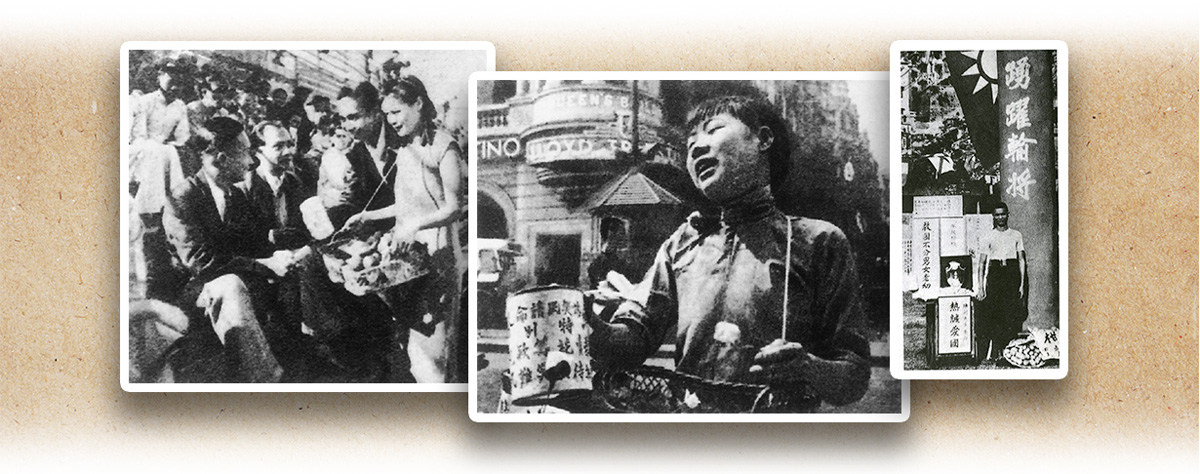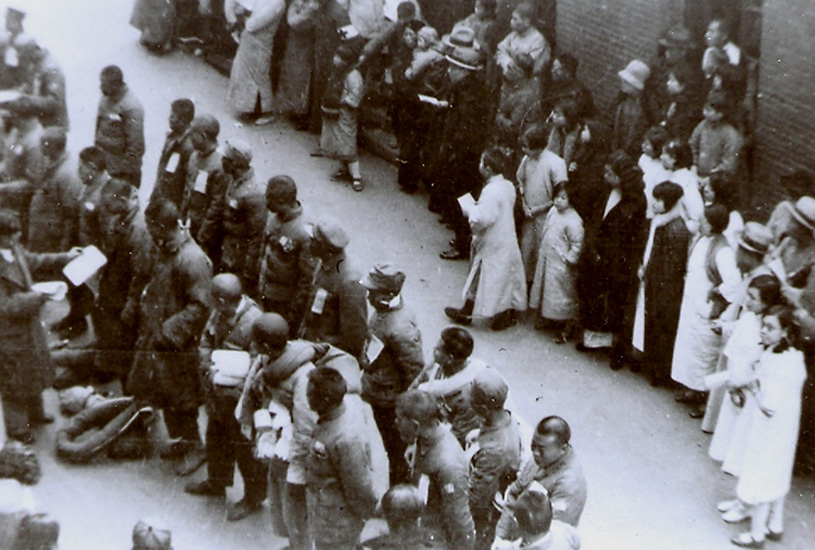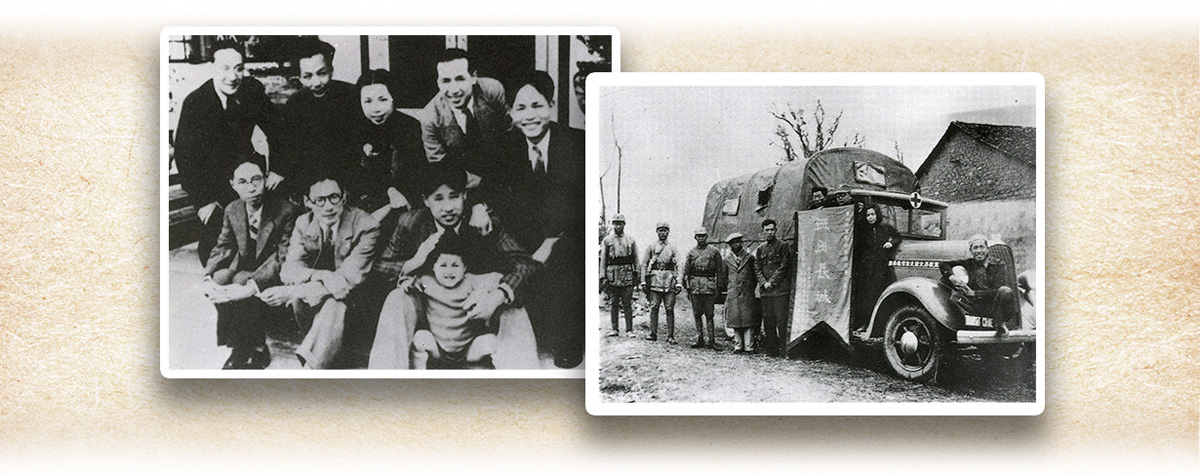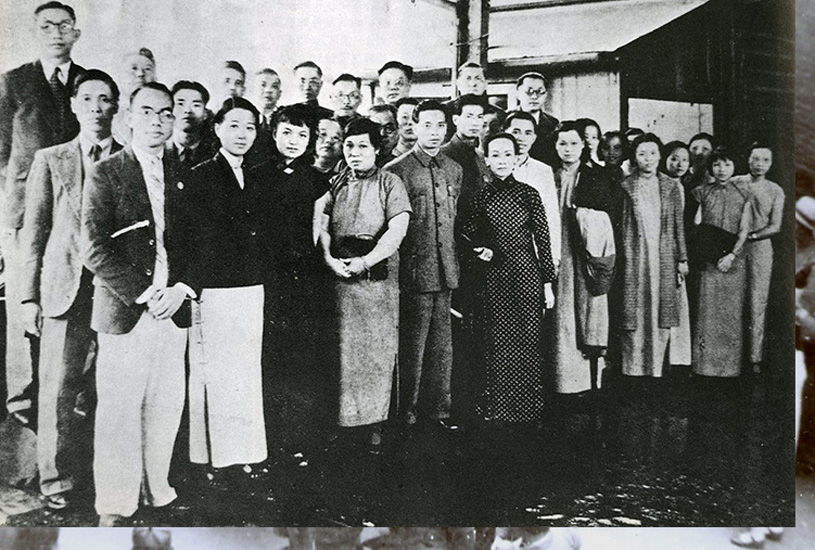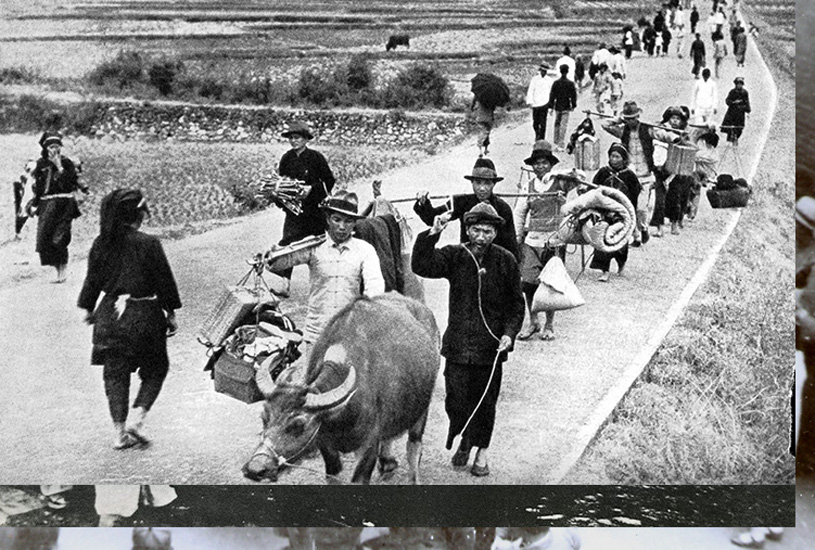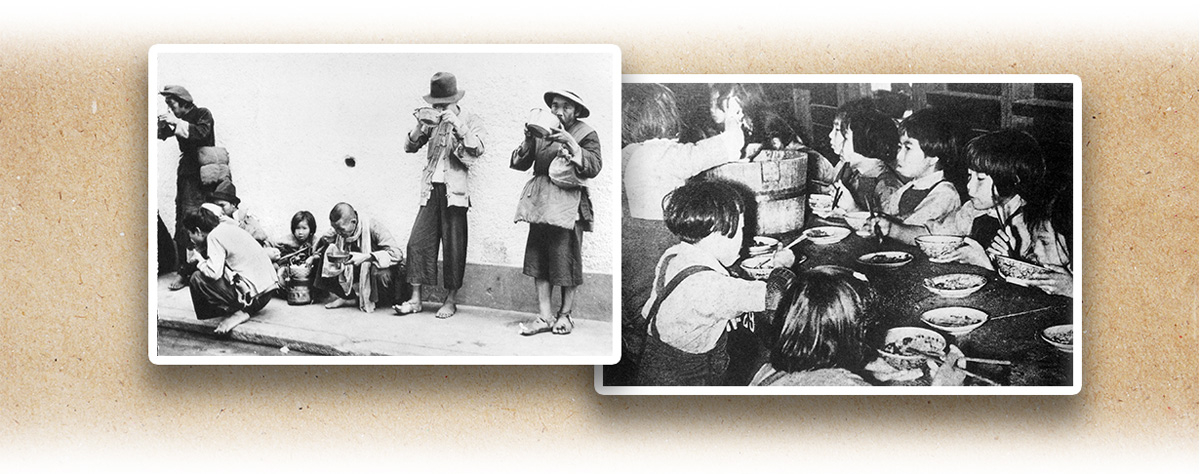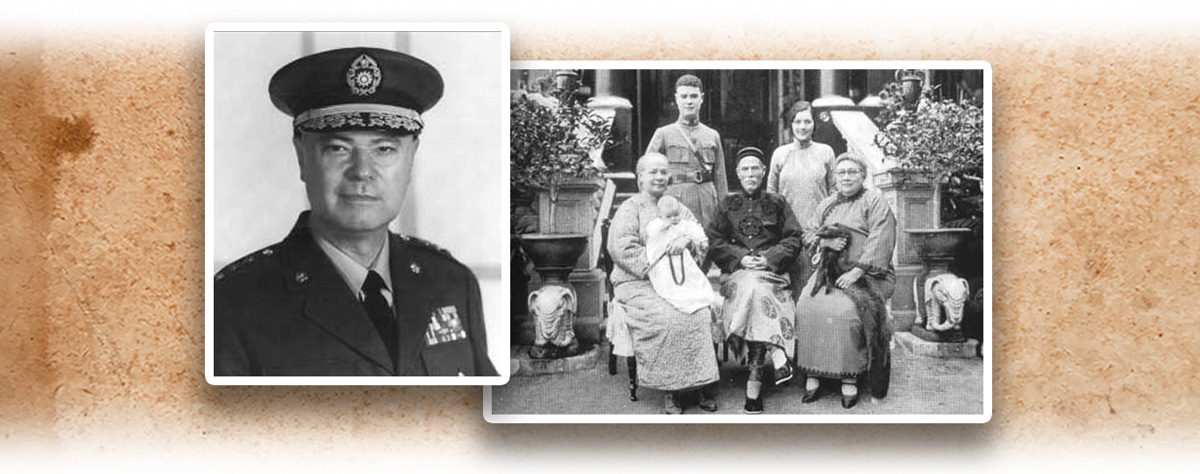Japan stepped up its invasion of China in the 1930s. The War of Resistance Against Japanese Aggression broke out following the September 18th Incident in 1931, the January 28th Incident in 1932, and the Marco Polo Bridge Incident on 7 July 1937. Patriotic Chinese in Hong Kong actively supported the Chinese mainland in resisting the Japanese invasion. Due to Hong Kong’s special political status and geographical location, it became one of the centres for the anti-Japanese and national salvation movements.
After the Marco Polo Bridge Incident, dozens of social organisations were established in Hong Kong to assist the War of Resistance by raising money through a wide range of activities. In 1938, the National Salvation Donation Campaign began at stalls selling vegetables in Sham Shui Po, Kowloon. It spread far and wide soon and received a remarkable donation of a million dollars. In October 1938, the fund for holding the celebratory banquet of the Double Tenth Day was used to donate winter clothes. 76 business groups in Hong Kong jointly collected 360,000 winter clothes. Other relief groups and the academia held flag selling events to raise money for purchasing winter clothes and gas masks. The whole Hong Kong extended their helping hand to refugees fled from the Chinese mainland when Japan captured Guangzhou (廣州) and Shenzhen (深圳) .
In Hong Kong, another way of supporting the War of Resistance was to organise medical assistance teams, services corps, etc. After the January 28th Incident in 1932, the 19th Route Army fought against the Japanese army fiercely. More than 20 medical staff in Hong Kong, including Dr. Sze Tsung-sing (施正信) and Dr. Fung Hing-yau (馮慶友), formed a medical assistance team to aid Shanghai. In the second half of October 1938, the Chinese Communist Party’s (中國共產黨, CCP) Southeastern Special Committee organised 15 rescue teams in Hong Kong to help fight against the Japanese in Huiyang (惠陽). The team members later became the core of the anti-Japanese guerrillas.
|
|
How did Hong Kong support the War of Resistance? |
|
|
See answer below. |
After the January 28th Incident in 1932, medical staff in Hong Kong formed a medical assistance team to aid a Shanghai hospital that treated wounded soldiers for over a month. The photo shows the team seeing the recovered soldiers of the 19th Route Army off at the Shanghai hospital.
The 19th Route Army rose to resist when Japan attacked Shanghai on 28 January 1932. To respond to the call of Dr. Niu Huisheng (牛惠生), the Chairman of the Shanghai Chinese Medical Association for supporting Shanghai in the resistance, more than 20 Hong Kong medical staff of the Hong Kong Chinese Association led by Dr. Sze Tsung-sing and Dr. Fung Hing-yau worked in a hospital that treated wounded soldiers in the Shanghai International Settlement for over a month. Dr. Li Song (李崧) also rushed to Shanghai to help, taking two boxes of medicine with him. Under the leadership of Dr. Niu, he raised money from enterprises including Wing On, Sincere, and the Sun to build a field hospital where he worked diligently for a month.
Left: a photo of Soong Ching-ling (宋慶齡, fourth left) and members of the Central Committee of the China Defence League in Hong Kong in 1938; Right: Soong walking down the stone steps at a pier in Hong Kong in 1939 to check the loading of supplies for the War of Resistance.
The China Defence League, a group led by Soong Ching-ling, was established at her residence in Hong Kong on 14 June 1938. Taking advantage of Hong Kong’s extensive international connections and other favourable conditions, the group published the China Defence League Newsletter to make the plight of the Chinese people and the urgent needs of the Chinese battlefield known to the international community. It helped raise a lot of money and supplies for the Eighth Route Army and the New Fourth Army led by the CCP.
Left: In January 1938, Liao Chengzhi (廖承志) became the Head of the Eighth Route Army Office in Hong Kong. This is a group photo of Liao (front right), Mao Dun (茅盾, front left) and Xia Yan (夏衍, front centre) taken in Guangzhou (廣州) in March 1938; Right: at the end of 1938, members of the Motor Transport Workers General Union went around Hong Kong Island, Kowloon, and the New Territories and raised over HKD4,000 to buy ambulances and medicine for the Eighth Route Army in Guilin (桂林).
To strengthen external propaganda and obtain material assistance for the Eighth Route Army and the New Fourth Army from the international community, the Eighth Route Army opened an office in Hong Kong in January 1938 with the approval of the British. Liao Chengzhi and Pan Hannian (潘漢年) came to work in Hong Kong as representatives of the Eighth Route Army and the New Fourth Army respectively.
A group photo of a medical assistance team organised by Tsung Tsin Association in Hong Kong during the War of Resistance taken before heading to the Chinese mainland.
Japan captured Guangzhou and Shenzhen by late 1938. Hong Kong became a refuge for many refugees from the Chinese mainland since then. The photo shows refugees arriving in the New Territories, Hong Kong, on foot.
Left: many refugees fled to the south to evade the Japanese army since the late 1938. Hong Kong offered train carriages as temporary shelter for some refugees. Right: Hong Kong voluntary medical staff treating refugees.
Refugees were provided with meals in Hong Kong. Left: refugees receiving congee from a rescue station; Right: children eating in a refugee camp in Hong Kong.
The Hong Kong public supported the War of Resistance and provided relief for refugees. Left: “Movie King of South China” Ng Cho-fan (吳楚帆, second right) and his wife Wong Siu-Hing (黃笑馨, first right) holding a charity sale during a charity football match to raise money for the War of Resistance; Middle: a female student selling flowers in front of Queen’s Building in Central to raise money for refugees; Right: a hawker holding a charity sale in front of Taikoo Dockyard. He displayed the flag of the Republic of China and slogans such as “Save the country, everyone” and ‘Passionately patriotic’ at his stall.
Plays and films about anti-Japanese and national salvation proliferated in Hong Kong during the War of Resistance. Left: Wang Ying (王瑩, first left) and Jin Shan (金山, second right) performing the anti-Japanese play Put Down Your Whip (《放下你的鞭子》) at Lee Theatre, Hong Kong in 1941; Right: a still of the Hong Kong anti-Japanese film Song of Retribution (《正氣歌》) released in 1941.
Left: General Ho Shai-lai (何世禮); Right: Ho Shai-lai (first left in the back row) and his family. The person sitting in the middle in the front row was his father Ho Tung (何東). Ho Shai-lai, the only Hongkonger among the Chinese senior generals during the War of Resistance, was promoted to Major General of the Republic of China in 1938 and to Lieutenant General when Japan surrendered in 1945.
|
|
How did Hong Kong support the War of Resistance? |
|
|
Hong Kong supported the War of Resistance mainly in the following ways: 1. Establishing supporting organisations such as China Defence League to aid the war. 2. Fundraising, such as the National Salvation Donation Campaign in 1938. 3. Organising medical assistance teams and services corps to support the Chinese mainland. For example, after the January 28th Incident in 1932, more than 20 medical staff, including Dr. Sze Tsung-sing and Dr. Fung Hing-yau, formed a Hong Kong medical assistance group to aid Shanghai. 4. Providing relief for refugees. Many refugees fled to Hong Kong since late 1938, where relief was provided to them. |




